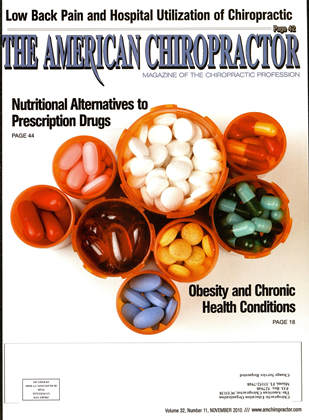"Meaningi-ul usb" criteria aki-: now official, thanks to the Final Rule on EHR Adoption released July 13, 2010, by CMS. And we now know what it takes for DCs to meet those criteria ... and become eligible for up to $44,000 in federal incentives. The good news is that DCs can achieve meaningful use. CMS has granted the profession several exceptions from the original rules released last January for public comment. When combined with CMS's relaxing of some of the other criteria ... meaningful use with a certified EHR is very attainable for most DCs. There will be free webinars offered later this year to show DCs how to capture this information very easily during the patient intake process and through alerts and reminders within your software. Core Objectives In order to meet the government's Health Information Technology "Core" objectives, most DCs must meet 13 of the 15 Core Objectives to demonstrate meaningful use with their EHR: I. Implement drug-drug and drug-allergy interaction checks. 2.Maintain an up-to-date problem list of current and active diagnoses. 3.Maintain active medication list. 4.Maintain active medication allergy list. 5.Record all of the following demographics: Preferred language; gender; race; ethnicity; and date of birth. 6.Record and chart changes in the following vital signs: Height; weight; blood pressure; calculate and display body mass index (BM1); and plot and display growth charts for children 2-20 years, including BMI. 7.Record smoking status for patients 13 years old or older. 8.Report ambulatory clinical quality measures to CMS: Hypertension—Blood Pressure Management. Preventative Care and Screening Measure Pair: Tobacco Use Assessment; and Tobacco Cessation Intervention. Adult Weight Screening and Follow-up. It' the utilization for one or more of the "core" measures is zero, then eligible providers must report results for up to three alternate core measures, such as: Preventative care and screening; weight assessment and counseling for children and adolescents; and childhood immunization status. 9. Implement one clinical decision support rule relevant to specialty or high clinical priority, along with the ability to track compliance with that rule. Provide patients with an elec tronic copy of their health informa tion (including diagnostics test results, problem list, medication lists and medi cation allergies) upon request. Clinical summaries provided to patients for more than 50 percent of all office visits within 3 business days. Capability to electronically ex change key clinical information (for example, problem list, medication list, allergies, and diagnostic test results) among providers of care and patient-authorized entities. 13. Protect electronic health information created or maintained by the certified EHR technology through security measures defined by the government standards. Menu-Set Objectives In addition to the Core Objectives, eligible providers must choose 5 oMO additional objectives from a list of "menu-set" criteria. Because DCs are granted exceptions from 3 of the 10. you must demonstrate only 4 of the following 8: Implement drug-formulary checks. Incorporate clinical lab-test results into EHR as structured data. Generate lists of patients by specific conditions to use for quality improvement, reduction of disparities, research or outreach. Send reminders to patients for preventive/follow-up care. Provide patients with timely electronic access to their health information (including lab results, problem list, medication lists and allergies) within 4 business days of the information being available to the eligible provider. Use certified EHR technology to identify patient-specific education resources and provide those resources to the patient, ii appropriate. The eligible provider who transitions their patient to an other setting of care or provider of care or refers their patient to another provider of care should provide a summary care record for each transition of care or referral. You've implemented a certified EHR and are meeting meaningful use objectives. How do you demonstrate mean ingful use and collect your incentive money? Once you have your certified EHR in place and are meeting meaningful use objectives, you'll be able to apply for your incentive checks after the time period each year. Be sure to choose an EHR company that will make it easy for you—as a DC—to demonstrate meaningful use. You will apply on paper in 2011 but. starting in 2012, the application process will come from directly inside the EHR software. The Benefits of EHR Outweigh Future Mandates It's to your advantage to implement your EHR now. That way you can be among the first to collect incentive funds in early 2011. And the longer you wait to implement your EHR. the less money you stand to collect... ultimately resulting in penalties through reduced Medicare reimbursements. Many slates and insurance companies are preparing to mandate the adoption of a certified EHR if that doctor wants to stay licensed in that state or wants to remain on the preferred panel of providers with that insurance company. For example. Minnesota has already passed a law stating that, by January 1, 2015, all providers must have a certified EHR in order to practice penalty-free in that state. Other IPA's, PPO's and panels of preferred providers are establishing rules to require all DCs to have a certified EHR in order to participate in their insurance plans. Although the regulators and third party payers are getting ready to set mandates, the real benefits of EHR technology include office efficiencies, potential overhead reduction, government incentives, and better patient management combined with more professional documentation. For all these reasons it makes good business sense to adopt EHR technology sooner rather than later. Maximize your incentives by implementing now. Dr. Steven Kraus is founder and chairman of Future Health, Inc. the leading EHR provider for the chiropractic profession and creator of eConnecl, free EHR software that is customizable with affordable Apps. Visit www.FHeConnect.com/1006. and learn more about the up-to $44,000 EHR stimulus plan.
 View Full Issue
View Full Issue












